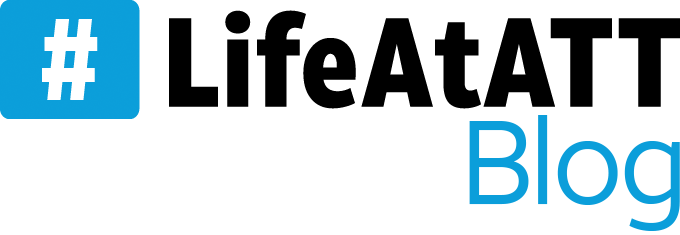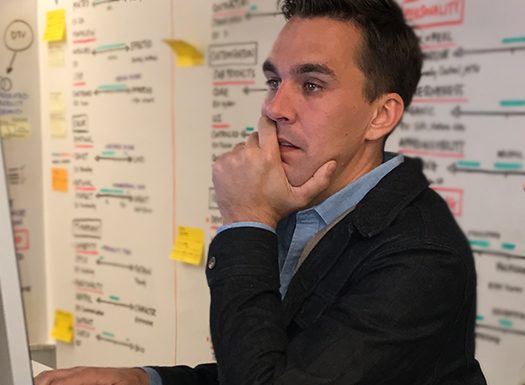In our Women Who Inspire series, we’re talking to the women who are driving change and innovation at AT&T. Through their hard work, we are inspired to do better, challenge ourselves and continue to promote women in STEM.
Jenifer Robertson is President of our Field Operations. Over the last 17+ years at AT&T, she’s developed deep business knowledge through roles in sales, service, operations, marketing and corporate strategy. She has a passion for developing strategic solutions that meet the rapidly changing needs of the business, industry and customer. Find out what brought her to her current position leading our technology strategy group and how she’s working to create new opportunities for women in STEM.
What inspired you to pursue a STEM-related career?
My STEM journey began over two decades ago. With three semesters of undergraduate engineering education completed, I shifted gears and graduated with degrees in English and Computer Applications. At my first job as a mainframe programmer, I learned very quickly that programming was not my calling. I wanted to expand my business acumen while still being in a technical field.
Thus began a rewarding journey with AT&T, where I moved between technical roles in network and operations, then pivoted to jobs in sales and customer service. Through a strong support system of male and female executives, I was offered numerous opportunities that challenged my technical and leadership skills. The roles were reflections of my advocates’ confidence in my ability to deliver while moving through steep learning curves. It’s that support system that brought me back into a technical development organization in 2016. The result of my journey to date is two-fold: 1) I bring a broad, balanced business perspective into the STEM environment; and 2) I am fully committed to providing the same opportunities and support to other women.
What do you love most about your job?
AT&T is a company about people: our customers, our shareholders and each other, and that’s the part I enjoy most. I’m honored to be part of a company with such a passion for the customer, a willingness to serve others and an unrelenting focus on developing employees. At its core, AT&T recognizes the value of diversity and inclusion and is leading the effort to eliminate STEM stereotypes. I celebrate the growth of women around me and look forward to watching STEM blossom into an equal, passionate environment.
What’s the most fascinating aspect of your field to you?
Right now, I am focused on design, data and the dramatic reskilling of the workforce. When I think about our industry and where AT&T plans to be, I appreciate the fact that we are on a springboard of innovation. Design puts the customer at the forefront of our technology solutions, and through the principles of simplicity and reuse, we’re able to deliver products and services in the most operationally efficient way possible. When we layer in the use of data insights, we’re positioned to respond to the constantly changing needs of our customers and the industry. Our Chief Data Office and Technology Development organizations are developing the tools and using emerging technologies like automation and artificial intelligence to enable easily-accessible data insights. These changing technical needs demand a workforce that can quickly respond and adapt to new technology. Our workforce transformation that began nearly four years ago gives our employees the ability to reskill and adjust to the industry landscape through continuous learning platforms.
What advice can you give women who are seeking a career in a STEM-related field and are hesitant about entering a male-dominated arena?
One of my favorite quotes from Mark Twain embodies the risk-taking attitude women in STEM should have if they’re struggling to gain their footing in the field: “Do the thing you fear and the death of fear is certain.” As a female technologist, you can change the face of the industry because of your unique perspective and background, but you can’t succeed without taking the risk. First, understand what transferrable skills and applicable experience you bring to the table so you can build confidence and add value right away. Then, honestly assess your biggest gaps and build a plan to learn and close those gaps. When you let go of fear and take risks, you’ll embrace your humility to learn when you fall and your confidence to get back up and try again.
Who are some of the women you think are game-changers in the technology industry right now?
I have quite a list of women that inspire me, and a few of them I’m lucky enough to call my friends. To name some: Mary Meeker, a partner at Kleiner Perkins Caufield and Byers, publishes the widely read annual Internet Trends report; Rachel Thomas, president of Lean In, leads the conversation about women in technology, STEM and gender parity; Reshma Saujani, founder of Girls Who Code, continues with her mission to close the gender gap in technology; and Mary Barra, chairman and CEO of General Motors and Fortune’s Most Powerful Woman in 2017, drives GM’s disruption of the electric car industry. Last but not least, both Melissa Arnoldi, who was the first female to hold the position of SEVP-AT&T Technology & Operations, and Brooks McCorcle always give me a boost of confidence through their inspirational messages about diversity and taking risks.
Were there any mentors who have made an impact on your life?
Absolutely. I have a diverse set of both male and female advisers and advocates spread across all areas of AT&T, and each has had a different impact on my career. I like to think of them as owning different personas in my support group: “the risk taker” pushed me into growth and learning opportunities I would never have pursued on my own; “the cheerleader” is always the voice of positivity and optimism who lifts me up when I’m down, and has proven to be my most vocal advocate; and “the realist” is who I go to when I need a dose of logic, reality and brutal honesty. The balance of perspectives and personalities allows me to lead differently, to approach challenges from a different perspective, and to practice humility when I take risks or ask for help.
What can employers do to retain more women in STEM?
A holistic approach is required to increase diversity in STEM, and it’s the key to retaining women. We must create a virtuous cycle by exposing diverse groups to STEM, providing them with opportunities to learn and engage with the field, and then celebrating their successes. Awareness programs targeted at diverse groups can expose people to the benefits and opportunities available in STEM fields. When awareness leads to continued interest, a wide range of educational and training opportunities must be available with the flexibility and customization that may be required for diverse candidates. Education can lead to an expanding pool of STEM recruits, which puts the responsibility on businesses to match increased demand with a supply of STEM job openings. Once placed in a STEM job, diverse candidates must have access to ongoing training, support and mentorship to maximize their opportunity for success. The virtuous cycle completes with formal recognition programs that celebrate diverse STEM employees and leaders. Central to each step in this process is the intentional focus on diverse candidates and how to customize the experience to their specific needs.
Thoughtful design and customization of the female experience can assist in retaining and advancing women in STEM fields. The virtuous cycle described above increases the supply of diverse STEM participants, but to advance women, we must consider their specific wants and needs. This could include programs that educate people on potential gender bias, schedules that adjust to accommodate the need for flexibility, and the application of STEM concepts to problems that are particularly important to women.
What do you think will have the strongest impact on closing the gender gap in STEM-related careers?
At the end of the day, closing the gender gap doesn’t happen if it’s led entirely by one gender. We need to implement a dual-gender support system. Early education opportunities and ongoing diversity programs are important in exposing young girls to STEM, but a support system of both women and men is critical to ensure their long-term success. Women who are willing to be transparent can serve as role models and offer guidance on the real challenges of being female in a predominantly male environment. And men who advocate for women in STEM express to the world the benefits that diversity brings, inspiring others to change and empowering women to show what they’re capable of.
Learn More




